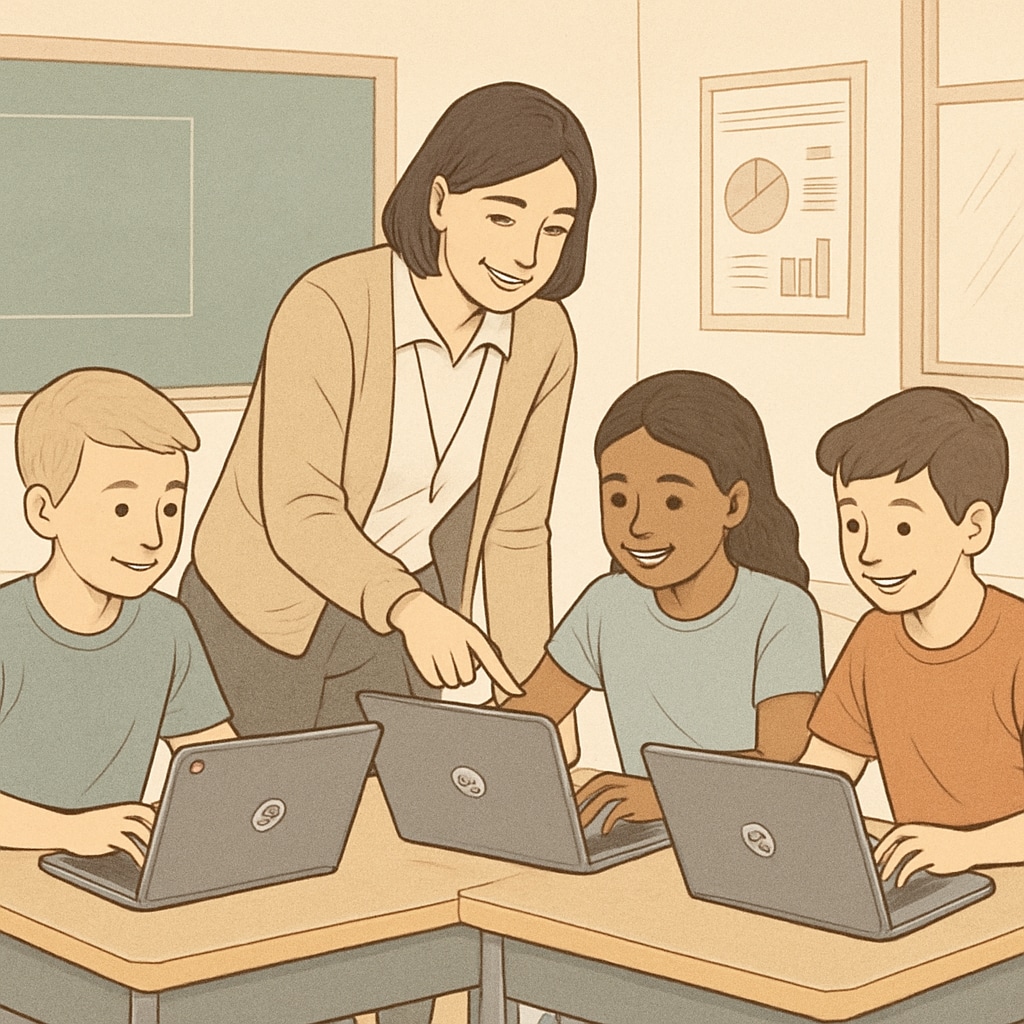The rapid integration of educational technology (EdTech), particularly tools like Chromebooks, into K-12 classrooms has transformed the learning environment. However, this shift raises a pressing question: Is the pursuit of digital efficiency compromising the cultivation of critical thinking skills? While EdTech promises streamlined learning processes and accessibility, educators must carefully evaluate its impact on the deeper cognitive abilities that students need to thrive in the 21st century.
EdTech’s Role in Enhancing Classroom Efficiency
Technology has undeniably revolutionized education. Platforms like Google Classroom and hardware such as Chromebooks simplify administrative tasks, improve communication, and provide students with immediate access to a wealth of resources. For example, a student can now find information on virtually any topic with a few clicks, bypassing the traditional limitations of physical libraries.
Moreover, EdTech tools support personalized learning. Adaptive learning platforms use algorithms to tailor content to individual student needs, ensuring that each learner progresses at their own pace. This customization aligns with modern pedagogical trends, emphasizing student-centered learning over traditional, one-size-fits-all approaches.
However, while these tools boost efficiency and engagement, they may inadvertently create passive learners. With answers readily available at their fingertips, students may lack the opportunity to struggle, question, and critically engage with problems—key aspects required for developing deeper learning skills.

Critical Thinking: The Foundation of Lifelong Learning
Critical thinking—defined as the ability to analyze, evaluate, and synthesize information—is a cornerstone of lifelong learning. According to educational experts, it is not enough for students to simply absorb knowledge; they must also question its validity, consider alternative perspectives, and apply their findings to new contexts.
This skill set becomes particularly relevant in the digital age, where misinformation is widespread. Students must navigate an overwhelming influx of data, distinguishing credible sources from unreliable ones. For example, while a Chromebook might provide instant search results, it is up to the student to critically assess the reliability of the information provided.
The challenge lies in ensuring that technology serves as an enabler rather than a replacement for critical thinking. Simply using EdTech tools does not guarantee cognitive growth. Instead, educators must design activities that encourage inquiry, debate, and problem-solving alongside technological usage.

Striking the Right Balance Between EdTech and Cognitive Growth
How can schools achieve a balance between technological efficiency and the development of critical thinking skills? Here are some strategies:
- Incorporate Socratic Methods: Use technology to facilitate discussions that require students to justify their reasoning and consider counterarguments.
- Project-Based Learning: Assign complex, open-ended projects where students must research, collaborate, and present solutions, blending digital tools with traditional problem-solving methods.
- Media Literacy Education: Teach students how to evaluate digital sources critically, emphasizing the importance of verifying information and recognizing bias.
- Limit Over-Reliance: While tools like Chromebooks are useful, encourage periods of offline learning to foster deeper focus and reflection.
For example, instead of using Chromebooks exclusively for research, students might first brainstorm solutions in groups, then use technology to refine and present their ideas. This hybrid approach ensures that technology enhances rather than replaces cognitive effort.
The Future of EdTech in K-12 Classrooms
As EdTech continues to evolve, its role in education will only expand. Tools like artificial intelligence and virtual reality offer exciting possibilities for immersive, interactive learning experiences. However, these innovations must be carefully integrated to avoid diminishing essential human skills like creativity, empathy, and critical thinking.
Ultimately, the goal of education is not merely to transfer knowledge but to prepare students to think independently, adapt to new challenges, and contribute meaningfully to society. By prioritizing a balanced approach, educators can ensure that technology serves as a bridge to deeper learning rather than a barrier.
As a result, schools must view EdTech not as a one-size-fits-all solution but as a tool to complement traditional teaching methods. Only by striking this balance can we truly prepare students for an increasingly complex and dynamic world.
Readability guidance: This article uses short paragraphs, lists, and transitions to ensure clarity. It minimizes passive voice and balances long and short sentences for accessibility.


